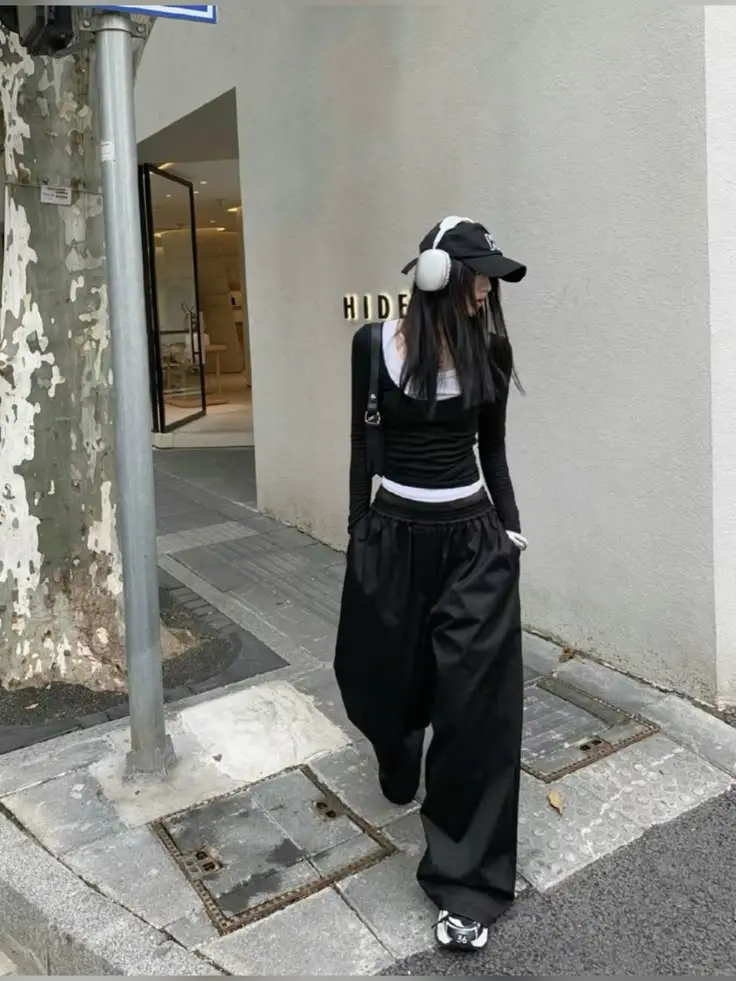Digital media has forever impacted how fashion magazines are viewed. How can print survive in today’s digital age?
When was the last time you picked up a print magazine at the store? Now when was the last time you used the internet or social media to view a magazine’s content? I’m guessing the second question’s answer is much more recent. Today, stacks of once-iconic fashion magazines now tend to collect dust in bookstores, while millions of people scroll through TikTok for the latest trends. From streetwear to balletcore to acubi style, the rise of social media has made print fashion publications a thing of the past in the industry they once ruled.
Digital media has influenced nearly every industry, and fashion is no exception. Once led by designers, magazines, and various celebrities, the fashion industry as a whole has now been taken over by many factors, such as social media influencers and fast fashion. These factors have resulted in many unfortunate declines surrounding the industry; from the decline of print publication to fashion-related careers that have declined by almost 30% since 2014, according to New York news outlet The City. As digital media continues to advance, can the fashion industry get back to its original ways, or will trends continue to take over?
Traditional Fashion Media
To offer a bit of context on how fashion was once consumed, fashion magazines were a major part. With the first American fashion magazine published in 1867 by Harper’s Bazaar, fashion magazines have come a long way since then. Around this time in the 19th century, fashion magazines were used as an outlet for women to be heard and express their opinions. Explained by historian Serena Dyer, at this time “{Fashion magazines} provided a space for women writers and entrepreneurs to grow and share their work, and have promoted making skills.” In other words, in such a dark time for women, fashion magazines offered a space for them to share their hard work and thoughts to other women living similar lives. In an article by Fashinnovation, it is explained how fashion magazines start important conversations in “a very superficial and timid way”, though still make impacts to many important societal topics, such as freedom of expression, the queer community, and even today’s digital shift (Vilaça, 2022). However, although fashion magazines have come a long way, traditional media today has recently come under fire for the lack of diversity found among various publications.
The Lack of Diversity in Fashion
Diversity and inclusion have remained persistent challenges in the fashion industry, especially since the creation of digital media. From print publications to advertising to the runway, there is not much diversity seen throughout fashion. This is a major issue surrounding print publications, as newer generations generally aim for more diverse content. Newer styles, newer body types, newer faces – audiences prefer new content, hence why social media is receiving so much popularity. According to Maliha Shoaib of Vogue Business, Daniel Peters, founder of Fashion Minority Report, claims that “There has been a regression in terms of our commitment to tackling DE&I. It’s obviously been affected by what’s happening economically, but I think that’s been used as too much of a crutch.” This goes to show how brands may be aware of this lack of diversity, and should work on improving their diversity, equity, & inclusion (DE&I) efforts.
Cut Funding
Another major issue surrounding the decline of the print magazine industry today has been cut funding for many fashion brands. This is largely due to declining advertisement revenue and print publication sales. Many advertisers are also shifting to digital media, where it is much easier to access advertisements through easy-to-see layouts and hyperlinks for viewers. As one of their main forms of revenue, advertisements are crucial to the survival of print magazines. Subscription sales, another main form of revenue, are also seeing a massive decline due to the rise of digital media. Audiences are switching to digital subscriptions to save their money and space if subscribing at all, as digital subscriptions are usually made cheaper than print subscriptions, and everything is on just one screen. With funding being cut, many magazines have acted in the only way they can – ceasing print publication. An example of this is Vogue, when they announced that Teen Vogue, one of Vogue’s smaller spin-offs, would stop printing magazines and only be available online. One of today’s top fashion magazines, Vogue, have been directly impacted by budget cutting, which goes to show how significant these digital shifts can be to magazines.
Staying on Trend
One other way print publications struggle to survive is their inability to stay on trend. Social media thrives on microtrends; ranging from new slang to viral products shown on TikTok, microtrends come and go just as fast. This is heavily consistent in the fashion industry, as the fashion side of social media introduces many unique fashion trends and brands and includes many different aesthetics. Streetwear, a popular fashion style on social media, brings back 90s clothing and is inspired by comfort and hip-hop culture. Acubi style, a newer fashion aesthetic, comes from South Korea, and features many silhouettes including layering and experimenting with clothes to create a more minimalist look.


While these trends are all over social media currently, fashion magazines and their annual publications struggle to keep up with them. Many magazines prefer to experiment with more dramatic, editorial looks to capture audiences. While many of these looks work for their covers, the content within the magazines still do not cover these trends. To keep up with microtrends, magazines are turning to digital media, and publishing articles for audiences much faster that way. While this method works for the magazine, this leaves almost no need for print publications.
The Push of Influencer Media
With the rise of digital media came the rise of influencers. Social media influencers use their platforms to recommend or sell their followers certain products or brands that may target them. This is done through sponsored content, user-generated content, and more. These people usually hold influence over their followers, and persuade them to get these products because of their trustworthiness as a creator. With this influence, their loyal followers tend to listen to their advice or recommendations, and this translates to the fashion industry in many ways. Fashion creators today usually post a variety of content, ranging from “outfit of the day” videos to PR unboxings of free items they received from brands. In all of this, creators showcase their styles to their audience or new audiences, ultimately giving fashion inspiration. According to a report made by Internet Retailing, a majority of global online shoppers use social media to discover fashion, with 52.4% of shoppers using Instagram and 51.6% using Facebook. With this growth of using social media as search engines, print magazines have almost no competition as they can’t really keep up with such quick trends, and influencers continue to win over social media users.
Promoting Diversity and Societal Changes
As a plus to social media, digital content heavily encourages more diverse and unique creators into the fashion world. Looking at traditional print magazines today, a majority of the content includes celebrities and portray unrealistic body standards set by models. While some magazines have made efforts in more diverse content, they are minimal compared to the diversity that social media offers. Societal changes, such as sustainability, the democratization of setting fashion trends, and challenging gender norms have all been highlighted in social media. Many fashion creators view their social media platforms as a tool for activism, like creator Munroe Bergdorf (@munroebergdorf). Bergdorf uses her platform to right for trans rights and representation in fashion, and challenges racism among beauty and fashion campaigns. With over 542k followers, she has reached a large audience and informs them on these pressing issues. Compared to print fashion magazines Bergdorf is winning in educating audiences, as she continues to use her platform to create new projects – she is releasing her second book in June 2025 and is releasing a documentary with Universal focused on a call for change in the trans community, releasing in 2025. These accomplishments go to show how powerful social media platforms can be in educating audiences, as well as what issues are being talked about regarding fashion in social media.
Adapting to Newer Consumer Values
In a world dependent on impressing consumers, fashion brands must learn to adapt to their new values, many of which are learned on social media. On social media, many creators stress the importance of sustainability in fashion. This refers to practicing ethical labor practices, as well as minimal negative environmental impacts. This includes the decrease of fast fashion, as cheaply made clothes are resulting in overflowing landfills. This issue has also become large in social media, as many consumers are beginning to look for better quality and longer lasting pieces to add to their wardrobes. With this, some of the best quality items are unfortunately more expensive, forcing many to turn to fast fashion. To relate this to print publications, as print magazines no longer dictate trends, fast fashion heavily relies on social media trends to survive. While print fashion magazines first created trends among the wealthy, fast fashion allows everyone to enjoy their own styles, even if unethical.
Conclusion
Fashion magazines were once worshipped and loved among women looking to be heard. Today, one well-edited TikTok or Instagram post by anyone could create a new global trend overnight. Print fashion magazines have faced numerous challenges since the creation of digital media, and have since learned to adapt to today’s digital shift in a number of ways. The rise of influencer culture, fast fashion, and increased representation in social media has forever altered how print magazines are viewed. Social media, while aiding in the decline of today’s print industry, continues to be used as an effective tool for magazines and fashion brands to showcase themselves and their projects, as well as gain advertisers. The golden era of print is now fading, but its influence doesn’t have to disappear – as long as we help it evolve.

Leave a Reply